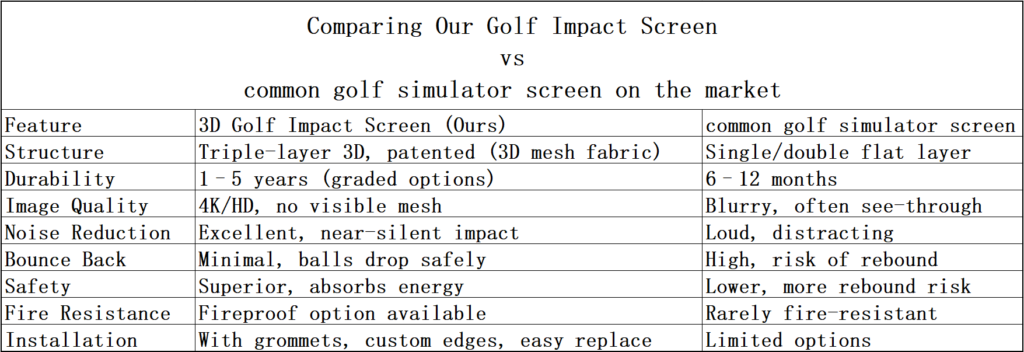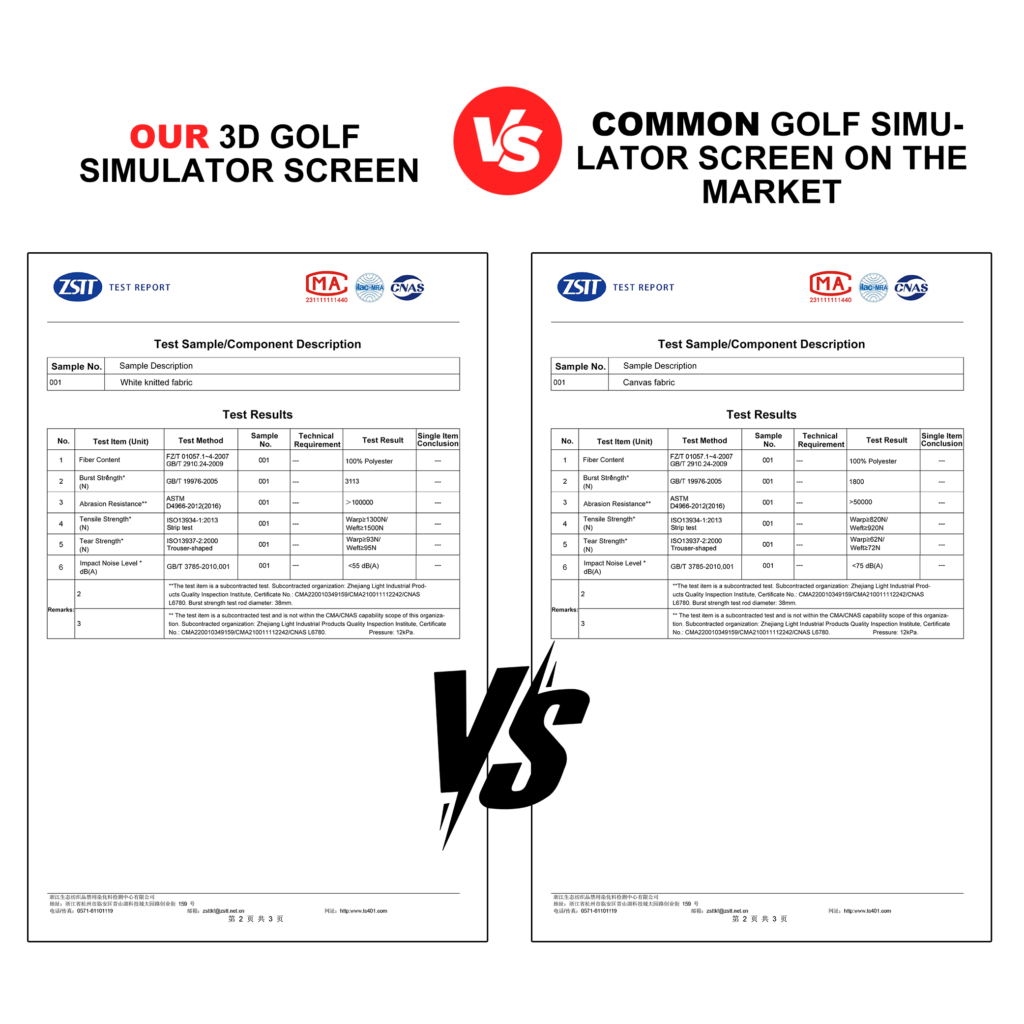Indoor golf is booming, and having the proper impact screen can make or break your setup—be it in a private home, a teaching facility, or a commercial simulator bay. In this walkthrough, you’ll learn what to look for in a golf impact screen, how to minimize unwanted rebound and noise, and why a multi-layered design often outperforms a simple net. We’ll also compare the benefits of a screen versus a traditional golf net and explain what sets our triple-layer, premium screens apart.
Our PGA Show Discovery
Last January, our factory showcased its Triple Layer Golf Impact Screen at the PGA Show in Orlando. Visitors flooded our booth to test the demos—many clients signed orders on the spot. They praised the solid construction and clear projection, and several have since added our screens to their home bays and commercial venues.
Three Fabric Weights
490 gsm “Plus Impact”
Light and affordable. Great if you only practice on weekends or set up in a small room.
540 gsm “Ultra Impact”
My personal favorite. I’ve hit over 500 balls on this one, and it still looks brand new. It strikes a good balance of toughness and price.
560 gsm “Fireproof Impact”
Required if your venue needs fire-safe materials (like some gyms or clubs). Holds up under heavy use.
Fully Customizable for Your Space
Any size available: We offer retractable golf simulator screen options, custom cut to fit your space, whether for a home golf simulator or commercial club.
Multiple edge finishes: Choose from standard, reinforced, or golf impact screen with grommets for easy installation and replacement.
Custom features: Add openings, hooks, or extra reinforcement to suit your unique installation needs.
One-Stop Service
From consultation to delivery, we provide end-to-end support to help you buy golf simulator screen online easily and confidently. Every golf simulator impact screen for sale is backed by expert advice and quality assurance.

Why Triple-Layer Golf Screens Are Worth It
All golf screen materials are woven by German Karl Mayer warp knitting machines.
Three-layer knit:
①A fine outer weave for crisp images
②A 3D mesh core that soaks up impact
③A sturdy backing to stop wear
This combo means:
①Lasting strength—no holes after thousands of swings.
②Clear projection—you won’t see dimples or mesh lines.
③Quiet, low rebound—the ball drops straight down instead of pinging back.
Cutting Down Noise and Bounce
I used to hear a loud “crack!” every time I practiced. Then I learned it comes down to fabric structure—our 3D-knit core really makes a difference:
①3D mesh core absorbs the impact instead of letting it snap back, so your swings feel softer and quieter.
②Triple-layer build dampens sound waves as they pass from the outer weave into the backing.
③Even tension mounting (no loose spots) prevents vibration that can amplify noise.
④Grommets for weight distribution keep the screen flat, further reducing rattles.
Because of that engineered 3D structure, these screens are noticeably more silent than traditional single-layer canvas.
All materials meet OEKO-TEX® Standard 100—safe around kids, pets, or students.

Making Your Choice
Think about how often you play, where you’ll install the screen, and how much noise you can tolerate. I’ve tried simpler nets—and every time I go back to a triple-layer screen. It just feels right.
Ready to upgrade? Browse our full lineup or drop me a line—I’m happy to share what’s worked in my own garage bay.


